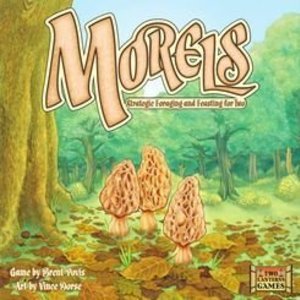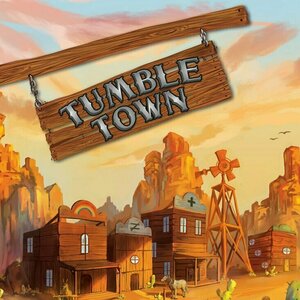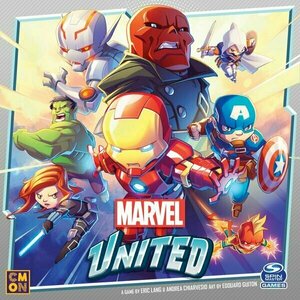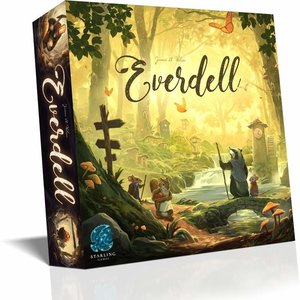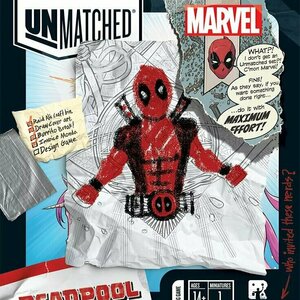
Secret photos KyCalc
Photo & Video and Utilities
App
Kyms looks like a working and stylish calculator App but it hides an inviolable vault in which to...
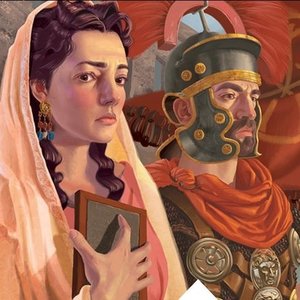
Pandemic: Fall of Rome
Tabletop Game
At the height of its power, the Roman Empire held more than two million square miles of territory...
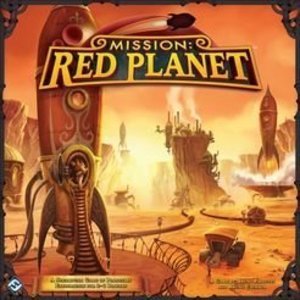
Mission: Red Planet (Second Edition)
Tabletop Game
With technology rapidly developing and the human population growing, Victorian-era Earth is in dire...
Boardgames SpaceGames MarsGames 2015Games GamesMadeBetterThanTheOriginal
Purple Phoenix Games (2266 KP) rated Tumble Town in Tabletop Games
Mar 5, 2020
Tumble Town is dice rolling, structure building, drafting game with variable player powers. You are charged with choosing building plans to be added to Main Street of Tumble Town. You do this throughout the game by selecting the plans that will make best use of the resources (dice) you gain. The buildings that you construct may allow you special powers to be used on future turns, or one-time bonuses to be used once built. The player who can turn the greatest profit (in terms of VP) at the end of the game will be the winner!
DISCLAIMER: We were provided a prototype copy of this game for the purposes of this review. These are preview copy components, and the final components will definitely be different from these shown. Also, it is not my intention to detail every rule in the game, as there are just too many. You are invited to back the game through the Kickstarter campaign, from your FLGS, or through any other retailers stocking it after fulfillment. -T
To setup, deal each player a packet of starting components: a unique Horse card, two reference cards, Storehouse card, Main Street card, and two brown (they are red in the prototype) dice to be rolled and placed within the Storehouse. Shuffle and display the 1-, 2-, and 3-cactus building cards per the rulebook instructions to form the market. Set aside a number of each die type per the rulebook (both the building cards and dice are determined by number of players). Determine the first player and give them the first player token (a colorful rubber potted cactus). Players will connect their two Main Street cards at the central icon to create a two-card street (we chose the wagon wheel – Easy) and the game can begin!
Turns in Tumble Town consist of four mini-phases that flow into each other rather naturally. The first phase will have the players choosing a revealed building plan card from the offer market. The face-down draw stack will inform the active player as to how many and which type of dice they must draw and roll. Once they have these dice in their Storehouse, the player may now build plans using the dice they control. Buildings can be constructed and placed right onto Main Street, or be placed on the plan card to be placed on Main Street on a later turn. If the player has collected more dice than their Storehouse can hold, they must discard any of the dice they wish. This concludes a turn and the next player can begin their turn.
Certain iconography on the building plan cards allow players to use special powers throughout the game once built, and there are three types. Cards with the silvery bottom panel of symbols and the 1x notation are powers that must be used only once and only when the building is constructed. These powers could be collecting a die of the player’s choice, or receiving various dice counters. The building plan cards that feature a circular arrow notation are powers that can be used once per turn, every turn, if wished. These powers are found on each player’s Horse as well and can be adjusting a die’s face value, or re-rolling two dice, as examples. The third type of power is from the golden paneled cards that have an arrow pointing to a vertical line. These powers are only activated at the end of the game and mostly include scoring variances, like 1VP for each building a player has constructed that has a vulture icon (or a windmill, for example) featured on the card art.
Once a building is erected, the player may choose to place it onto their Main Street cards. When they place them, the player will need to choose where on Main Street these buildings should live. Like Bob Ross always says, “There are no mistakes, just happy accidents.” A player can place their buildings anywhere they wish on Main Street, but the Main Street cards will give extra bonuses to those players who plan ahead and place their buildings strategically. Some plots will ask for a building of a specific height (one die high or three dice high). Some will ask for the base level of the structure to be made of a specific material/die color (brown wood, black coal, silver metal, and gold… gold). Extra points are awarded if one-die-width alleyways are allotted, and these Main Street placements can score a bunch of endgame points.
Turns can be very quick or very deliberate, depending on the types of players involved. AP-prone players will take longer on their turns as they internalize all possibilities of their rolled results, while people like me just fly by the seats of our breeches. The game continues in this fashion: four mini-phases of drafting cards from the market, grabbing the associated dice, rolling them, and attempting to erect the best buildings on Main Street until two dice pools contain two or fewer dice. The current turn order finishes and the game is over.
Components. Again, this is a prototype copy of the game, and the publisher was decent enough to include a listing of items to be improved in the final version (like the red dice being poured brown in final – that really messed up someone’s strategy during a play-through for us because they kept forgetting that red is actually brown). The overall art style is very simplistic and I do NOT mean that negatively. The graphics and artwork are great, and give exactly what is needed without being so distracting that you cannot concentrate on your strategy. The dice are normal dice quality (that always seem to roll poorly when I’m rolling… hmm…). Once you see the photos of how the game will look during production, you will appreciate how great this is going to look on the table. No problems with components at all, save for the red vs. brown debacle that happened on our table. I really hope they keep the awwwwesome rubber cactus first player marker because it’s amazing.
I absolutely loved this one. I have always enjoyed using items for purposes other than originally intended – in this case, using dice as building materials. Of course, playing any game with dice introduces a bit of luck and instability in strategy, but Tumble Town offers quite a bit of manipulation of dice rolls that keeps almost all dice results feasible and useful. I really enjoyed the stacking, the quick turns, and the desperation when someone takes the last wood die when I was gunning for a wood-based building on my next turn. This game is light, but is chocked full of difficult decisions and luck of the roll. Tumble Town is for people who enjoy the rolling and stacking from FUSE (minus the frenzy), and the spatial building placement chaining of Villages of Valeria.
If this is the game for you, then we highly encourage you to check out the Kickstarter campaign which is running until Thursday, March 26. Tumble Town has already exceeding the funding goal at time of this review, but all future pledges will contribute to stretch goals that will improve components and add other components (spoiler?). So get out there and build up Tumble Town, ya yella-bellied greenhorns!
Purple Phoenix Games (2266 KP) rated Marvel United in Tabletop Games
Sep 1, 2021
Disclaimer: This review encompasses only the base game of Marvel United. There are a number of expansions, but they will not be addressed in this review. -L
Marvel United is a cooperative game in which players take on the roles of various Marvel superheroes tasked with stopping the main Villain from completing their Villainous Plot. Follow the setup instructions detailed in the rulebook, selecting a Villain with whom to battle, 6 random Locations, and whichever Heroes you decide to use to fight the big bad. Place Threat cards, Civilians, and Thugs on the various Locations as indicated, and place the Villain and Heroes as described in the rules. Shuffle the Master Plan deck and respective Hero decks, and each player draws a hand of 3 cards. Choose a Hero as the ‘starting’ Hero, and the game is now ready to begin!
Over a series of turns, players will be resolving Villain effects and playing Hero cards to perform actions. The game always begins with a Villain turn, and the first step is to reveal a Master Plan card, adding it to the Storyline (table). Master Plan cards have different effects to be resolved – move the Villain to a new Location, BAM! effects (usually attacking Heroes or advancing their Villainous Plot towards victory), and adding Civilians/Thugs to surrounding Locations. Once all effects on the Master Plan card are dealt with, the game moves to a Hero turn. During a Hero turn, the player will perform 4 steps: Draw a card, Play a Card, Resolve Actions, and Location Effects. To start, the player will draw a card from their Hero deck and add it to their hand. They then select a card from their hand to play, adding it to the end of the Storyline.
Looking at the symbols at the bottom of their played card, the Hero will now resolve their actions. Actions could be Movement (to an adjacent Location), Attack (Thugs/Henchmen or the Villain in their current Location), Heroic Actions (rescuing Civilians or working to clear the Threat on their current Location), or Wild (any of the previous actions). During this step, a cool twist comes into play – after all, the game is called Marvel United, right? When a Hero plays a card, they resolve the symbols on the bottom of their card AND the symbols on the bottom of the previously played Hero card! This simulates the various Heroes uniting their efforts to take down the Villain! So when selecting your card, be sure to check out the last card to see if you can create a sweet chain of actions for maximum benefit. The final step is to use Location effects, if applicable. Location effects are only available after the Threat to the Location has been cleared, and allows the player to perform special actions (draw extra cards, move to other Locations, etc.). If you end your turn on a Location that has been cleared, you may use its ability if you so choose.
In order to defeat the Villain, the Heroes must complete Missions. The 3 Missions in each game are to Rescue Civilians, Defeat Thugs, and Clear Threats. So with their actions on their turns, Heroes will be working to complete these Missions, moving them closer to victory. The turn sequence of the game is unique as well – the Villain will take a turn after every 3rd Hero turn, not opposite every single Hero. Keep that in mind as you decide which card to play when! The game essentially continues in this fashion (with a few extra effects) until either the Heroes win or they lose. Heroes win if they defeat the Villain! The Villain is defeated when at least 2 Missions are completed, and the Villain has been sufficiently damaged by Attacks. Heroes lose if the Villain completes their Villainous Plot, the deck of Master Plan cards has run out, or if any Hero starts their turn with no cards left to play. The Heroes either win together or lose together.
So I know that kind of sounds like a lot, but I promise that once you get playing, the game flows really well and is pretty intuitive. Marvel United can basically be broken down into 2 steps: Villain turn and Hero turn. All you are doing is playing cards and resolving actions to complete your goals. One of the coolest things about this gameplay is the fact that on your turn you resolve not only your played card, but also the previously played Hero card as well. It does a good job emulating the Heroes working together, and adds a strategic element to the overall gameplay. Maybe you wanted to play a certain card, but based on the last Hero card, you should play this one to benefit the group the most. Players really are all working together to defeat the Villain, instead of each playing their own Hero and going in for the fight one-on-one.
Another neat aspect of the game is the inclusion of the Missions. Heroes are not allowed to directly attack the Villain until at least 2 Missions have been completed. This ups the gameplay because it stops players from just going straight for the Villain from the start, not taking anything else into account. In ‘real life,’ Heroes are also concerned with saving Civilians and neutralizing threats, so the Mission requirement makes the gameplay feel more authentic. Well, as authentic as a superhero game can feel…. The variability of Locations and the random setup of Threats each game means that you likely won’t play the same game twice. Add in expansions too and you’ve got even more scenarios. With different Hero choices, you get to try out different combinations and find out which Heroes really work well together. The gameplay itself may be simple (draw cards, play cards, resolve cards) but the variety of Heroes, Villains, Locations, Threats, etc. keeps it engaging and entertaining.
As for components, I only have positive things to say. The Villain/Hero minis are chunky and cute, the artwork is all colorful and fun to look at, and the cardboard tokens are thick and crisp. All the symbolism in the game is clear, and the text is legible and easy to comprehend. One thing to consider is that this game can be a bit of a table hog if you let it. So just be prepared for a bit of a bigger footprint with this one. Overall, great production quality of the base game, and from what I’ve seen of the expansions, those are top notch as well.
Don’t let the cutesy artwork fool you – Marvel United isn’t an easy game by any means. It takes a decent amount of strategy to be successful, and it does really take a team effort. You stay engaged in the gameplay right up until the very end, and it’s more involved than you would think for being a lighter game. I am also a big fan of Marvel Legendary, and I have to say that this gives me those vibes, but in a more simplified and streamlined way. I’m not sure I would go as far as to call Marvel United “Marvel Legendary Jr.,” but it’s also not entirely a bad idea….. Overall though, I really liked Marvel United way more than I first anticipated. It’s light, yet strategic, and has some unique elements that keep you on your toes. I can’t wait to get my hands on some of the expansions to see how I can mix and match and create even more awesome scenarios! Purple Phoenix Games gives this one a heroic 16 / 18.
Purple Phoenix Games (2266 KP) rated Everdell in Tabletop Games
Jun 12, 2019
As in all my reviews I am not going to explain the entire game. There are videos for that. There are digital scans of the rulebook for that. I’m going to give you my impressions and opinions on the games I played.
Disclaimer: We are reviewing the vanilla Everdell retail edition. We do not have plans to review the Collector’s Edition, but if we get our paws on a copy, we will update this review with its information. Same goes for the Pearlbrook expansion. -T
So I am going to start off with the negatives: the font on the cards. I understand why they made the font so small – they wanted to highlight as much of the gorgeous art as possible. So everything gets shoved to the sides of the cards and subsequently gets smushed in the process. That makes for a very difficult time trying to read the cards and the abilities and the chaining card names. That certainly put a hamper on Bryan’s experience with the game, and that’s a big big reason he has it at a 3. It’s near unplayable for him for that matter. I told him to put on his big-boy glasses, but, you know, younger brothers and all…
However, the gameplay is where it’s at with this one. The worker placement is excellent, with great choices every turn, even when Laura monopolizes the pebble space. The chaining cards a la 7 Wonders is familiar and they make sense – the Innkeeper goes with the Inn, etc. The gameplay is fluid and after a round or two we all “got it” and the game became quite fun. The components are incredible – even with the retail version we played we got those awesome little squishy berries. The theme is so stinkin cute with all the woodland creatures, and paired with the incredible art and components I was mesmerized. The game did not wear out its welcome, nor was it too quick. It was just right. I will definitely be pulling this one out much much more over the year, and I hope to convince Bryan and Josh that it’s better than their first play.
We at Purple Phoenix Games are all over the place with this one, awarding it a score of 18 / 24.
https://purplephoenixgames.wordpress.com/2019/02/15/everdell-review/

Pocket Wiki for Hearthstone: Heroes of Warcraft
Reference and Utilities
App
Looking for help or the latest tips for the game Hearthstone: Heroes of Warcraft? This all-in-one...
Purple Phoenix Games (2266 KP) rated Unmatched: Deadpool Expansion in Tabletop Games
Jul 8, 2021
This breakdown is for the expansion for the hit game, and Golden Feather Award-winning, Unmatched system entitled Unmatched: Deadpool.
This expansion adds the amazing Marvel character Deadpool to the game system, to expand any standalone set. It ships with a great DP mini, his HP dial, and a deck of 31 hilarious and ridiculous cards. It cannot be played without a base set, and I have used him with both Cobble & Fog as well as the Battle of Legends, Volume 1 sets.
DISCLAIMER: We were provided a prototype copy of this game expansion for the purposes of this review. You are invited to pre-order from the Mondo website or purchase from any retailers stocking it once released. -T
Does this expansion add a lot to the gameplay of original Unmatched? I very much think so. If you have yet to play any version of Unmatched, please do yourself a favor and remedy this at once. When you have played it, come back to finish the review.
What Deadpool lacks in full game components, it sure makes up for in uniqueness of character play. No more will the player need to strategize and synergize throughout the game. In fact, the Deadpool player now has access to so many crazy cards that really break the rules and make him so much harder to overcome. Deadpool has several healing cards in his deck, but also has a special healing ability that triggers every turn he attacks. I suppose now I realize why DP has an HP dial with a max HP of 10. I really do not want to spoil too much about what can be found in the Deadpool deck, but just know there are many chimichangas, many healing, and many rulebreaking possibilities.
Is it absolutely necessary to invest in the Deadpool expansion to enjoy Unmatched? No, but if you are a fan of Marvel or the character, it is a must-buy. However, if you (or the people with whom you play) are prudish sticks in the mud, then totally pass on it. That leaves more for the rest of us.
Official recommendation: I cannot say enough great things about Unmatched and every character I have played with it. Each character is certainly unique, but I will venture to say that you will be hard pressed to find a character even more unique than Deadpool. He offers such hilarity that I want to use him nearly every game. Now, knowing all the cards that come in his deck can tempt his players to manipulate the environment before starting the game, so do take care if you attempt to play AGAINST a Deadpool player. That’s the warning I will give, but I officially (and highly) recommend all fans of Marvel, Deadpool, and the Unmatched system to grab a copy of this small expansion.
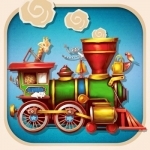
Ticket to Ride: First Journey
Games
App
"***It looks like Days of Wonder has come up with a solution to my problem with the introduction of...
